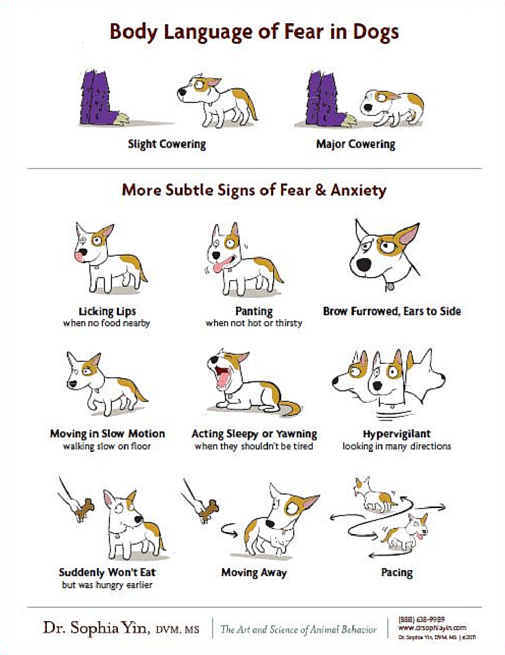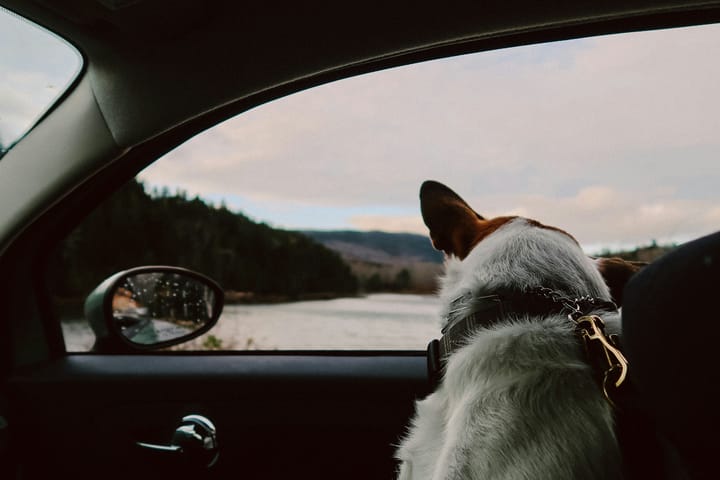Recognizing Signs of Fear in Your Dog

Almost 90% of owners will say that their pet has some sort of behavioral problem. This can range from the "reactive" or "cranky" to "dominant" pets. There is a behavior or "personality quirk" that's not ideal, but it's something that the pet's family lives with because...well, why not? It's not a big deal. He's just "cranky" or "certain things set him off". But what if you can notice signs of discomfort before that happens? What if Fido is acting out because he's scared? Can you recognize the early signs of fear?
Fear is the number one cause of aggression. It's imperative that you be able to 1) understand the cause and basis behind the fear, 2) recognize the overt as well as subtle signs, and 3) be aware of what people commonly do to that worsens the fear and aggression.
-Dr. Sophia Yin
Sophia Yin was a veterinarian and behaviorist who spent years learning, teaching, and applying Low Stress principles as a smarter alternative to force. Her goal was to gain and teach a new understanding of the motivation behind an animal's response and why fear is such a driving force behind many negative and potentially dangerous behaviors. Essentially, what may be a small and inconsequential behavior now may turn into something worse if you don't understand the 'why' behind it and help your pet before it turns into a problem. Knowing what to look for and recognizing some of the more subtle and early signs of fear is also incredibly important in any pet setting, such as a vet's office, groomer's or day care center.
Signs of Fear:
Most pet owners can recognize obvious signs of fear, but there are many subtle signs that your pet is uncomfortable or scared. If those signs are
ignored, THAT'S when you may see a more severe reaction. Fido has been trying to communicate with you that he's uncomfortable, stressed, and
scared, but you haven't been able to see it, or those signs have been ignored.
Did you know?
A stiff body, lip licking, yawning when not tired, or even turning the head away can all be early indicators that your pet is feeling nervous or unsure. These subtle cues are often easy to miss — or even misread as quirky, cute, or "just how they are." But for our four-legged companions, these signs are how they whisper, "I'm not okay."
When those whispers go unheard, they can turn into shouts — barking, snapping, hiding, or worse. That’s why understanding the body language of fear is one of the most compassionate things you can do for your pet.
At Hearth & Hound Nomads, we believe deeply in honoring each animal’s individual comfort zone. Whether we’re caring for your pup while you’re away, meeting a shy kitty during a house sit, or just saying hello to a new furry face on our travels — we move slowly, with empathy, and always strive to read what your pet is trying to tell us.
We’ve learned that fear isn’t something to "fix" — it’s something to meet with gentleness and patience. When we respond with understanding rather than control, pets begin to trust. And that trust? That’s the heart of it all. So next time your pet seems “off” or “moody,” take a moment to pause and observe. You may be catching the very beginning of a conversation they’re trying to have with you. One that says, “Please listen. I’m feeling a little unsure.”
By noticing — and honoring — those moments, you’re creating a safer, happier world for your pet. And we’re here for it, every step of the way.


Comments ()